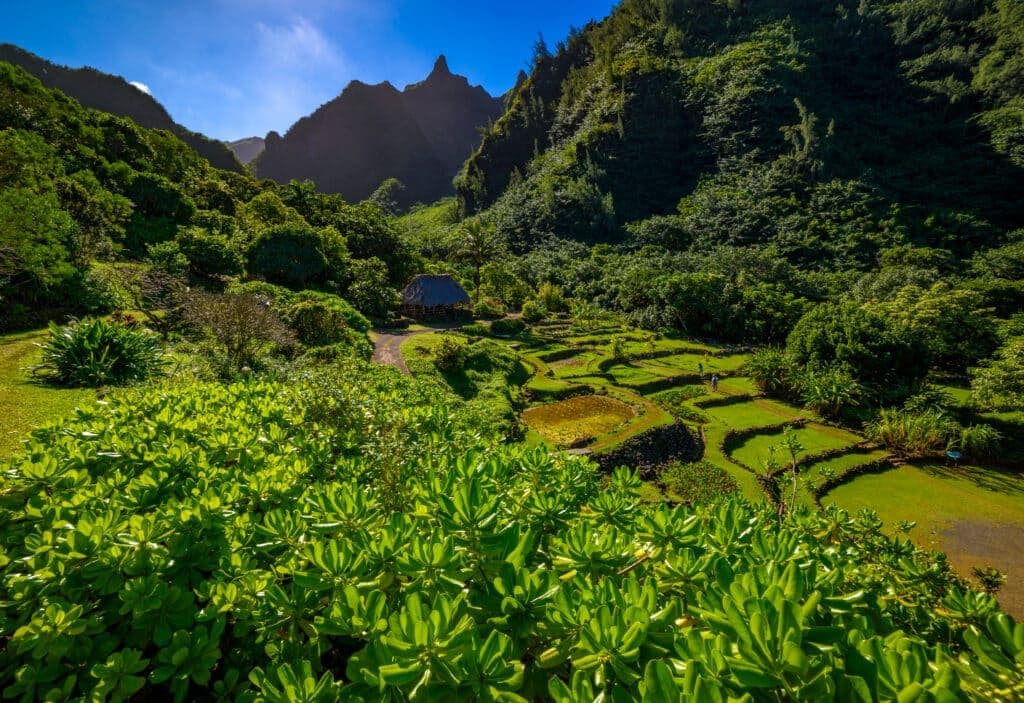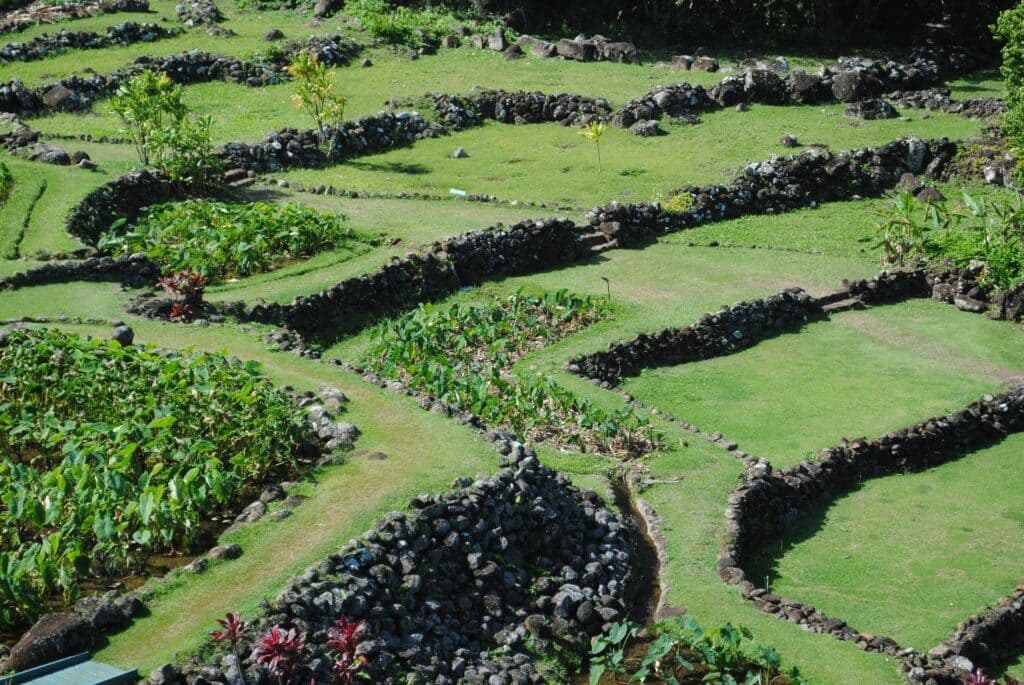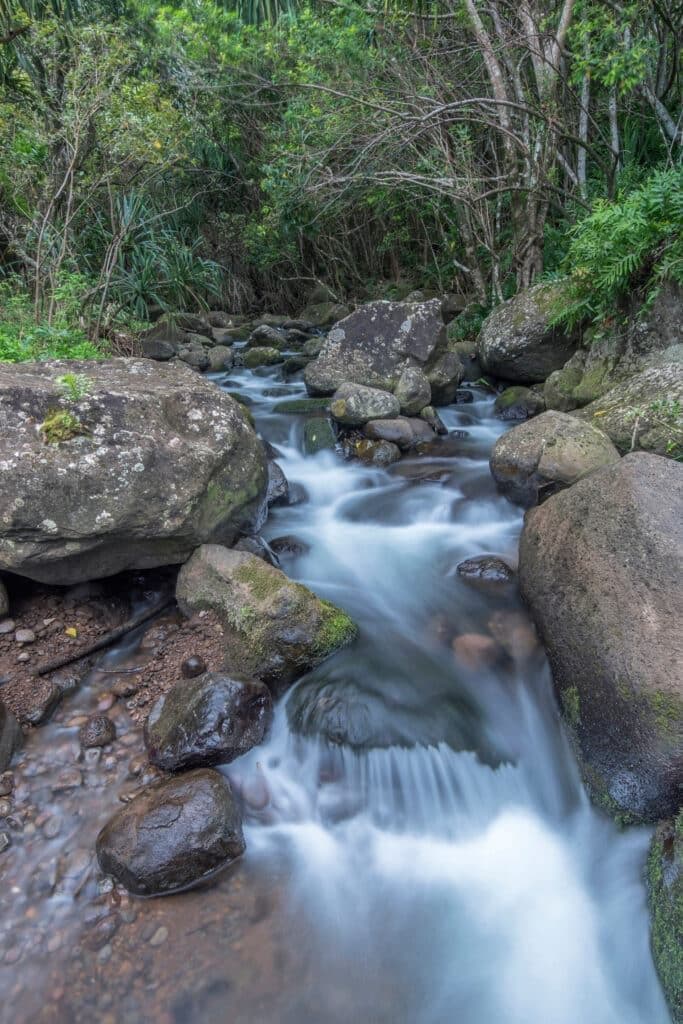By EJ Leonard
Before you hear the birdsong, before you see the terraced gardens or the mist clinging to mountain ridges, there’s a feeling that settles over you at Limahuli. It’s the feeling of walking into a story that’s been unfolding for centuries.
Nestled in Hāʻena on Kauaʻi’s North Shore, Limahuli Garden & Preserve is more than a botanical garden or hiking destination. It’s a sacred valley — alive with native plants, ancient practices, and generations of care. It embodies the deep reciprocal connection Native Hawaiians have to the land, as an ancestor, teacher, and source of life.
Visiting Limahuli isn’t just scenic — it’s a chance to remember to experience Hawaiʻi in a way that honors both the past and the future.

Limahuli Garden & Preserve on the island of Kaua’i (Shutterstsock)

At the heart of Limahuli’s mission is the practice of mālama ʻāina, which means caring for the land. This core value of Hawaiian culture is evident in the garden’s efforts to preserve the native forest and promote the growth of native plants. By doing so, Limahuli aims to protect the delicate balance of the ecosystem and prevent the spread of invasive plants that threaten this fragile environment.
Visitors to Limahuli Garden & Preserve can immerse themselves in the beauty and significance of the Limahuli Valley through self-guided tours. These tours offer a peaceful stroll through the native forest, providing a glimpse into the history and traditions of the Hawaiian people. For those seeking a deeper understanding, guided tours led by knowledgeable docents are also available for insights into the cultural and ecological importance of the garden.
The terraces of lo’i kalo at the Limahuli Garden & Preserve. Kaua’i

Near the top of the trail, you’ll see the Limahuli Valley unfold in quiet layers. The Makana Mountain rises steeply above you, catching the light as clouds drift across its slopes. These sheer cliffs form a breathtaking backdrop, framing the landscape with a kind of still grandeur. In the quiet, you might hear a bird calling in the wind or the distant rush of Limahuli Falls, which plunges nearly 800 feet into the lower valley.
Limahuli Garden & Preserve (Shutterstock)
Join our newsletter for travel inspiration, insider tips and the latest island stories.
By subscribing, you agree to receive emails from Hawaii.com. You can unsubscribe anytime. See our Privacy Policy.